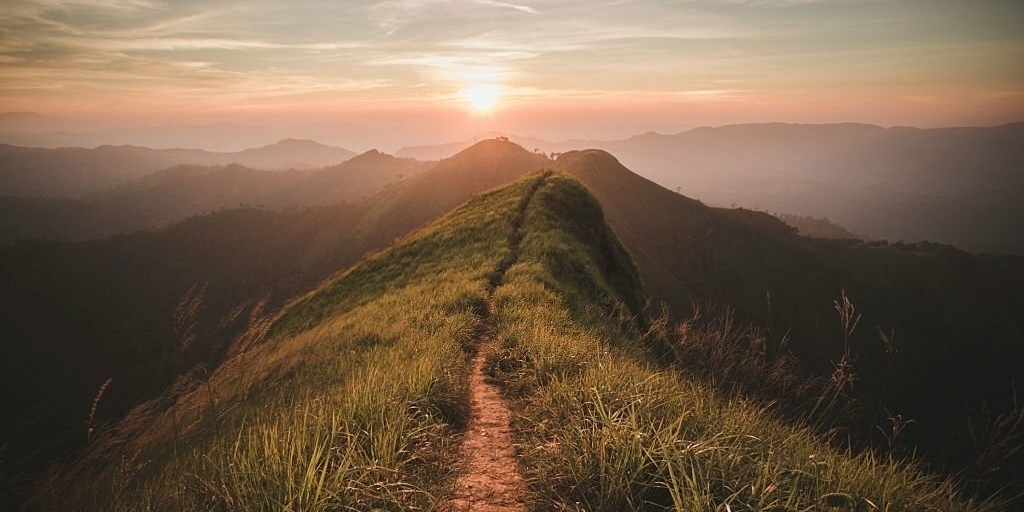


Trekking adventure of the Everest base camp Trek with Island peak climb is the world-renowned trekking adventure in Nepal. It offers you the breathtaking views of the world’s highest mountain peak, the Mount Everest. This epic journey actually begins from Lukla, a small arena with having domestic airport. So, is also, known to be the gateway to the Khumbu region of the Himalayan range.
In the Lukla region, the trek takes you to the picturesque land of the Sherpa villagers through the dense forests, risky but adventurous suspension bridges, and high-altitude lands. The way guides you through the Namche bazaar where you observe the market town and leads you to the Higher slopes reaching the Everest base camp. It is said to be the starting point of the climbing attempt at the summit of Mt. Everest. You can take this adventurous trek as not just a physical test but also a chance to dive into the richness of Sherpa culture and the natural beauty of the range of the Himalayas.
Island Peak, also known as Imja Tse, is a major high peak in Nepal's Himalayas. It is a famous climbing destination for mountaineers and adventure seekers from all over the world, rising to an elevation of 6,189 meters (20,305 feet) above sea level. Island Peak is located in Nepal's Khumbu region, which is readily reached through a picturesque flight from Kathmandu to Lukla. This makes it an ideal starting place for climbers traveling to Everest Base Camp or other nearby trekking routes. Island Peak, despite being classified as a "trekking peak," provides a moderate level of technical climbing obstacles, making it accessible to climbers with some prior training in ice and snow tactics. Climbers can obtain important experience in high-altitude mountaineering.
Talking about the time requirements, the Everest base camp trek typically takes about 12 to 14 days to end. This trek covers a length of about 130 km round trip in Khumbu region. Basically, the time taken depends upon the fitness, age group, and choice of itinerary. In general, trekkers choose the traditional route from Lukla to the Everest base camp. The journey offers you eye-catching views of the Himalayan peaks, including Mt.Everest, and provides a glimpse into the Sherpa culture.
The best seasons are pre-monsoon (spring) and post-monsoon (autumn) when the weather is consistent and clear. Permits are needed. Everest Base Camp Trek permits can be obtained in Kathmandu, while Island Peak permits can be obtained through a licensed agency.
The extra joyful journey of the Everest base camp trek with island peak climbing seamlessly blends adventure and beauty, making it the most demanded trekking experience in the world. Undoubtedly, there are various factors contributing to the fusion of adventure and beauty. Firstly, the adventure features open up from the challenging terrain and altitudinal conditions. Trekkers need to navigate through the rugged trails, and suspension bridges in the long length and steep ascents, giving the feeling of conquer. Not missing the feel of the thin air adding up at higher altitudes supplements the adventure of body and mind. Second, the Everest region is breathtakingly beautiful.
Trekkers ascend through lush forests to stunning views of the Khumbu Valley, which is filled with charming Sherpa settlements. The walk provides sights of exotic fauna, colorful prayer flags, and historic monasteries, creating a tranquil and culturally rich environment. The Everest Base Camp Trek's adventure and beauty are a beautiful blend of physical struggle, environmental grandeur, and cultural depth, providing an extraordinary and transforming experience for all who embark on this remarkable trek. Island Peak is a popular climbing location that caters to a wide variety of mountaineering enthusiasts, from novice to professional climbers, due to its accessibility, technical challenge, and magnificent surroundings.
Trekkers who want to combine the two excursions usually take a detour to Island Peak Base Camp and get sufficient training before tackling the ascent. During the ascent, climbers face problems including steep ice and rock parts, altitude sickness, and extreme weather conditions. Along trekking and climbing routes, accommodations and services range from humble tea houses to high-altitude huts, with amenities becoming more rudimentary as the terrain becomes more difficult.
Proper planning, which includes researching the exact route and its offerings, is essential for ensuring a safe and pleasurable journey. Due to difficult conditions, higher altitudes may have fewer services, therefore trekkers should bring basic supplies such as food, water purification tools, and first-aid kits. Satellite phones can also be useful for emergency communication.
Trekkers and climbers can expect a variety of hotels and services, with alternatives getting more rudimentary as their distance from civilization and altitude rise. A flexible mentality and adequate preparation are essential for a successful and pleasurable experience. The sense of accomplishment, spectacular natural beauty, and cultural immersion in the Himalayas make these trips really unforgettable.
